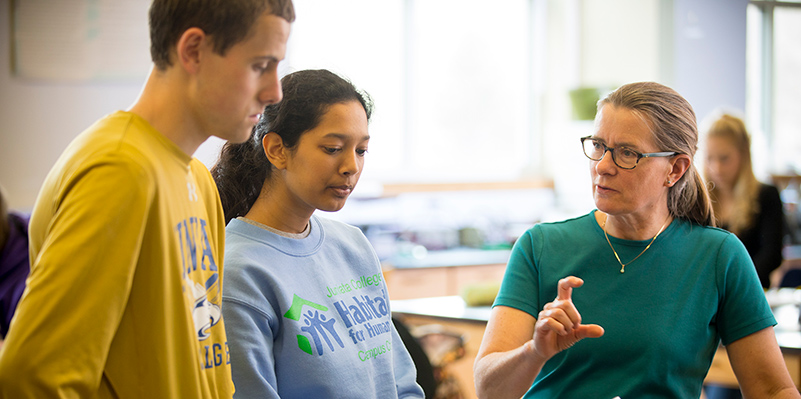
An environment that is universally designed for learning shows students there are multiple ways to be successful.
Faculty play an important role in ensuring that all individuals, including those with disabilities, have access to course content and instructional activities. Participation in lectures, written assignments, field or lab work, exams, class discussions, and computer applications may be impacted by an individual's disability. There are accessible structures and an accessible framework you can create in your classrooms that can enable all students to learn better, including those with disabilities.
Inclusion and Access in your classroom begin when you are first creating your course.
The structures that create accessible classrooms also create inclusive classrooms where all students learn better. One example of this is making it known that you are attentive to delivering accommodations by inviting students to make an appointment with you to discuss accommodations; this shows an openness to all students about your willingness to help.
Resources
-
To do before the 1st day of classes:
- Make sure your textbooks are affordable and available in alternative format before you choose your textbooks and other reading material. Check for Accessible Course Material
- Design your course so that students can engage, learn and demonstrate the learning objectives of the course in multiple ways.See also "Plus-One" Thinking: A Framework for Inclusive Teaching
- Use Moodle as your main portal for all class information and accessible materials other than the textbook. Post notes or other resource information on your Moodle course page.
- Make sure you have an updated ADA Statement with the correct contact information. See Current ADA Statement
- Write an Inclusive Classroom Syllabus statement.
On the First Day and Week of Classes:
- Review the syllabus and read the syllabus statements aloud.
- Make a class announcements about students with accommodations emailing you with times they can meet to discuss accommodations.
- Follow up with each student letter of accommodation you receive, and email that invites the student to discuss the letter.
- Bring up the Moodle course on the projector and show students where you have put information. If you can, have those who have their laptops with them or phones, enroll in Moodle course while in your classroom. (You can do this on the second day as well to catch more people).
- Poll the students about the best times for them to visit your office hours. (You can use “polls everywhere” or have them rank their choices that coincide with your availability).
- If your office is hard to find - give directions.
Meetings for Students with Accommodations:
- Review the student’s letter before they come see you, if possible.
- Explain areas in which you are already allowing everyone in the class the per said “accommodation.” Ex. technology used in the classroom, recording lectures, using a laptop for note-taking.
- Ask how you can help them with the other accommodations. Ex. Will the student be using the Testing Center in the Library or could you allow them extra time or separate space near your office. Do they need to let you know about their testing accommodations for every test?
- Ask them have they noticed any other barriers in your class that may be challenging, so you can both solve the problem out together.
- Never ask about their specific disability. They may choose to disclose, and that’s their choice.
- If students add the course late - ask them to set up a time, so you can go over the syllabus with them and make sure they get enrolled in Moodle course




